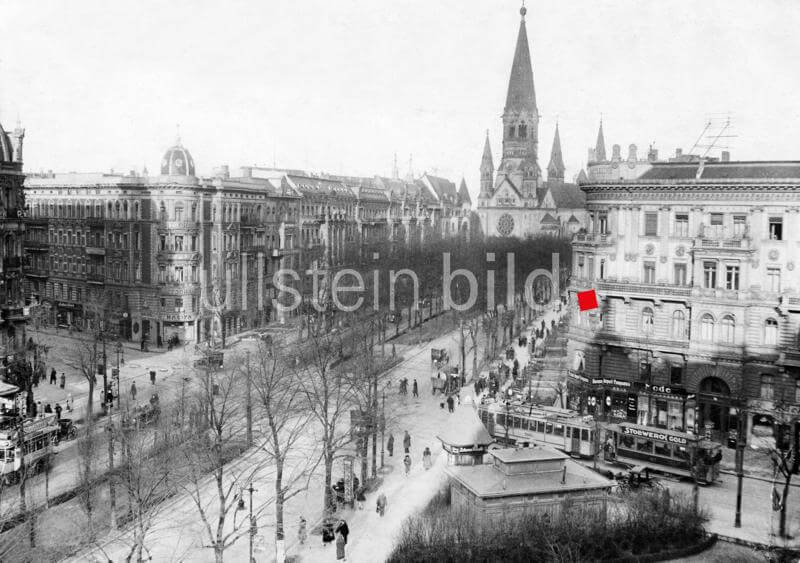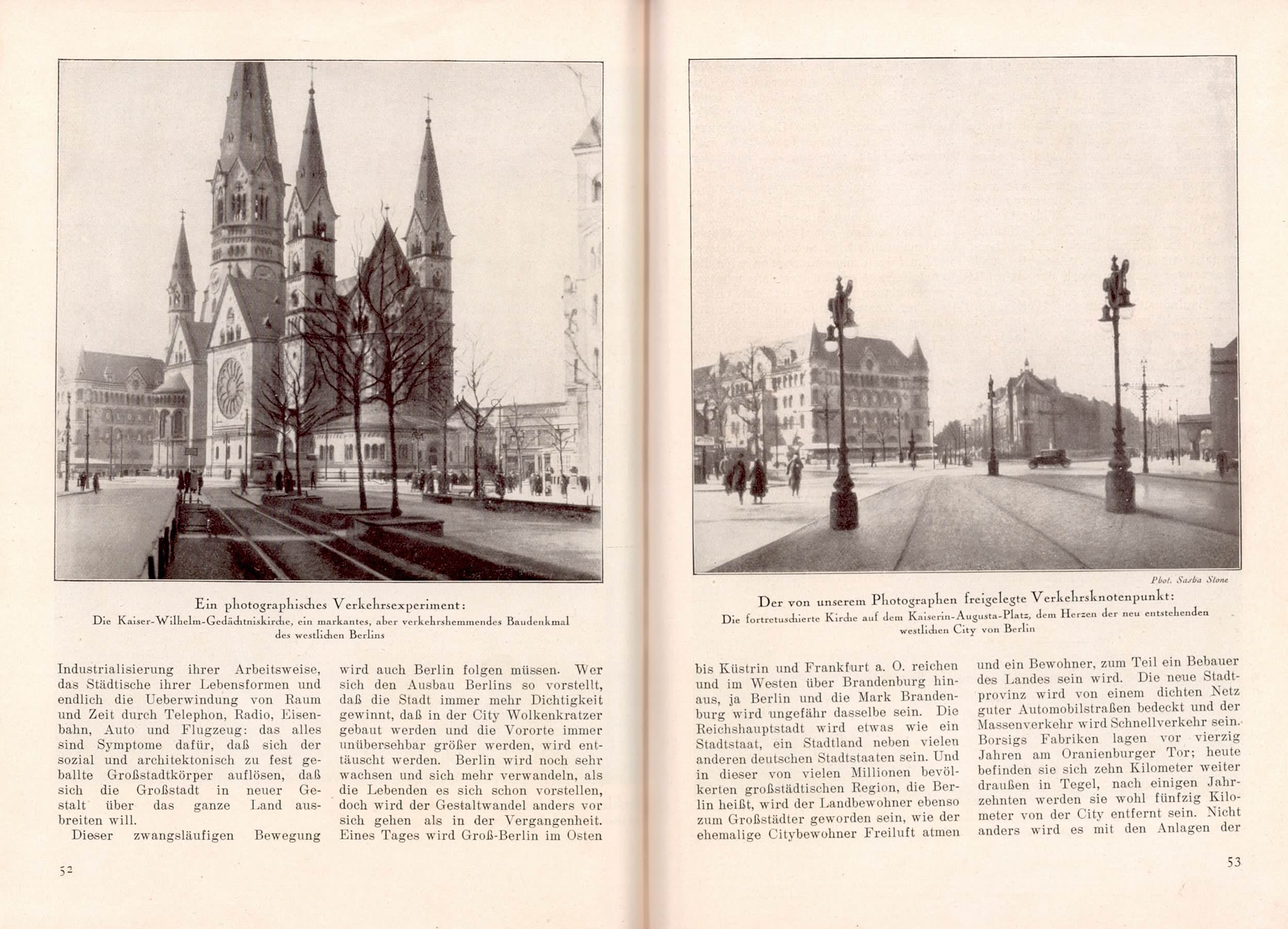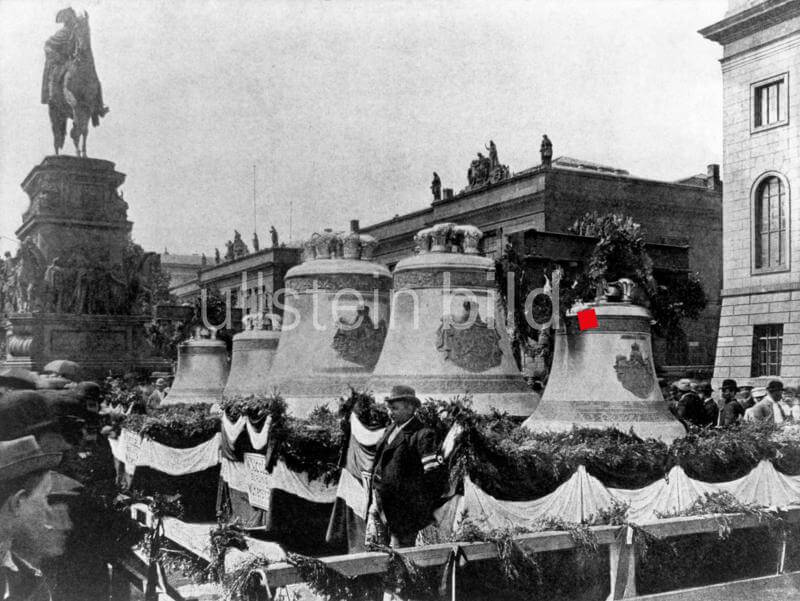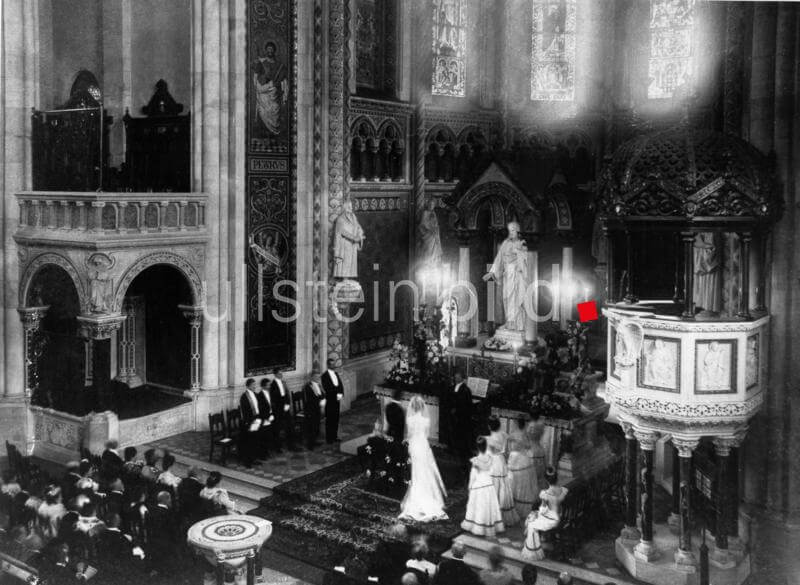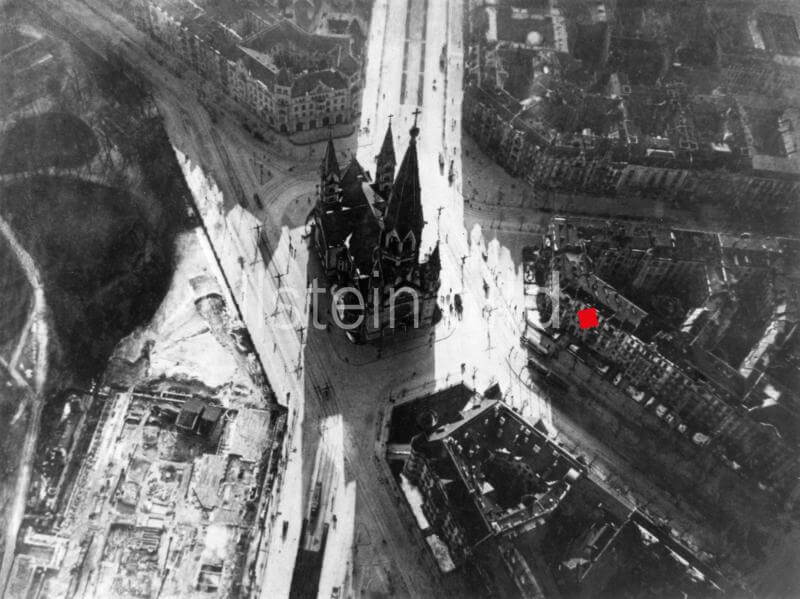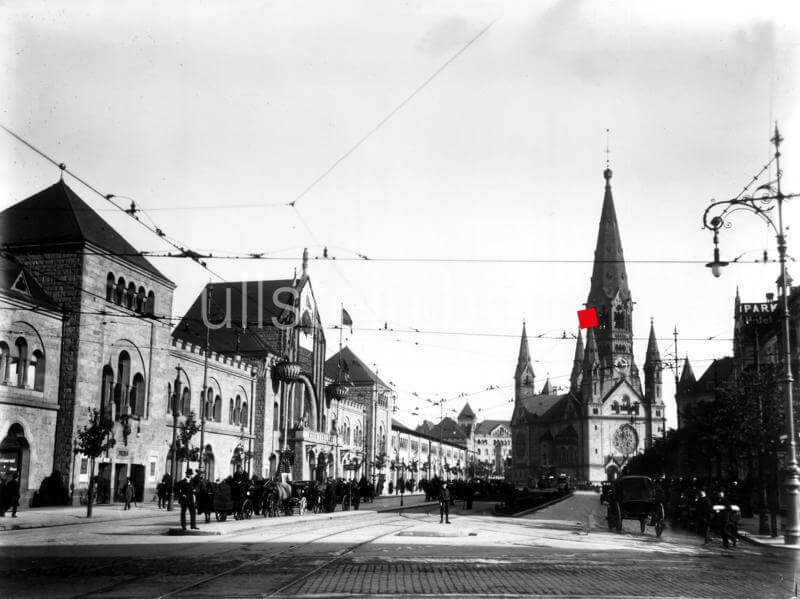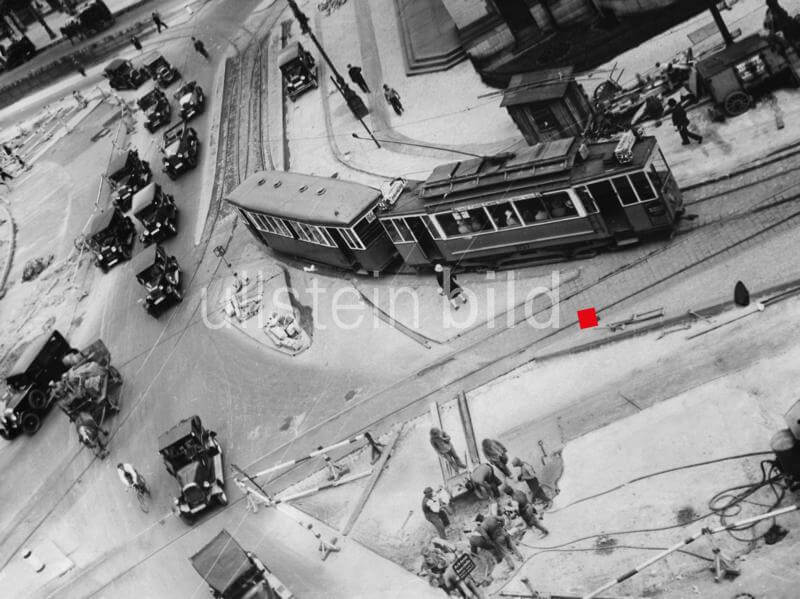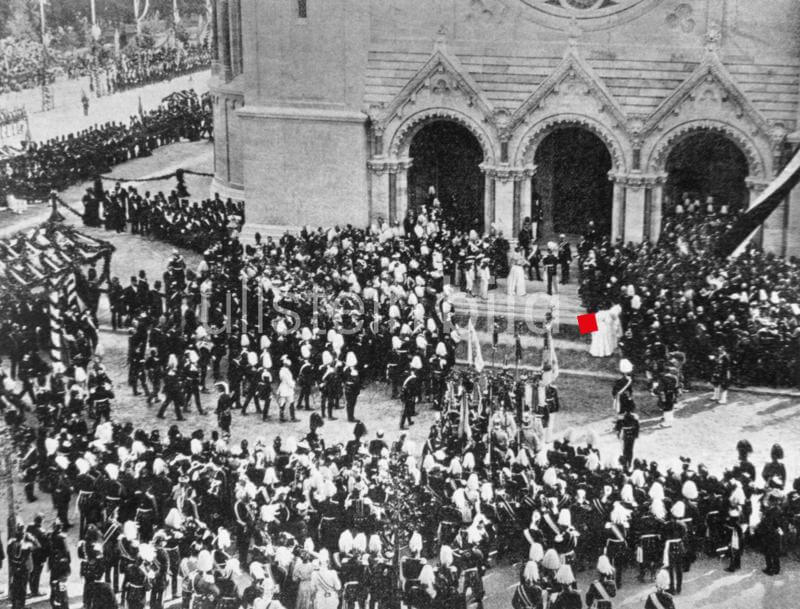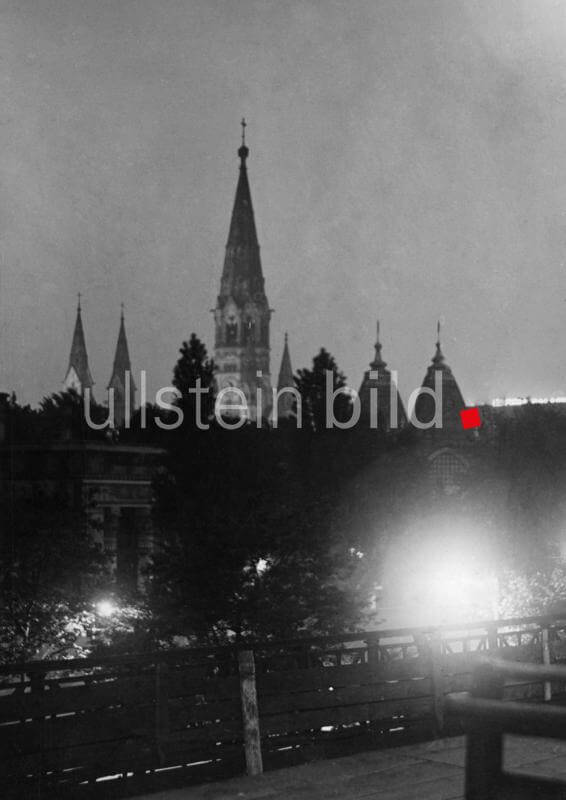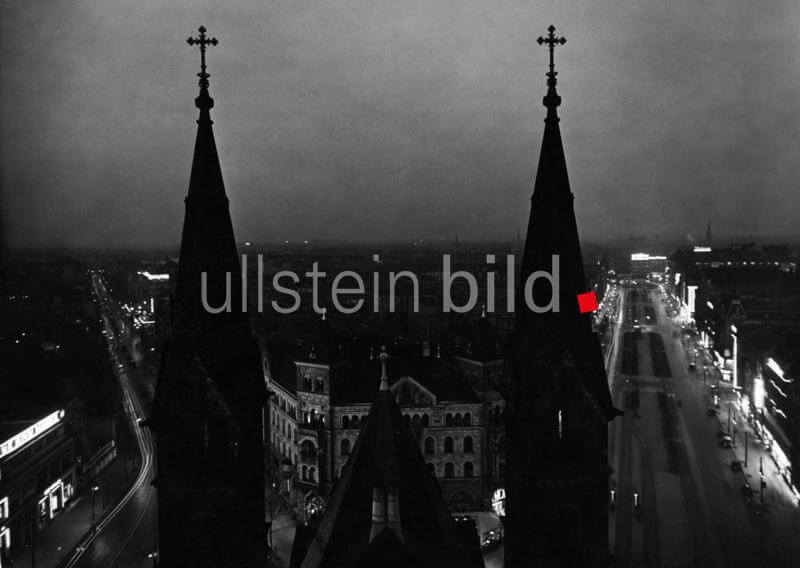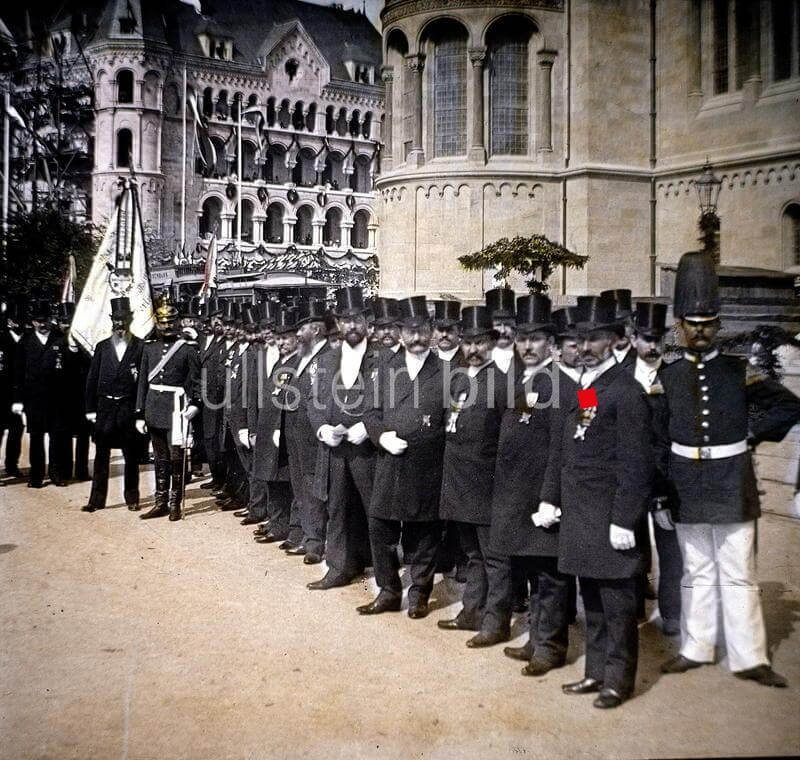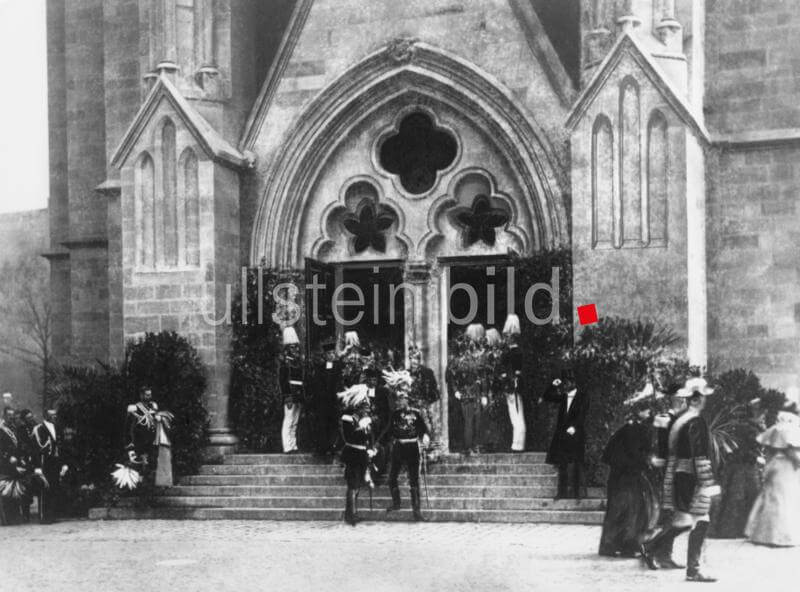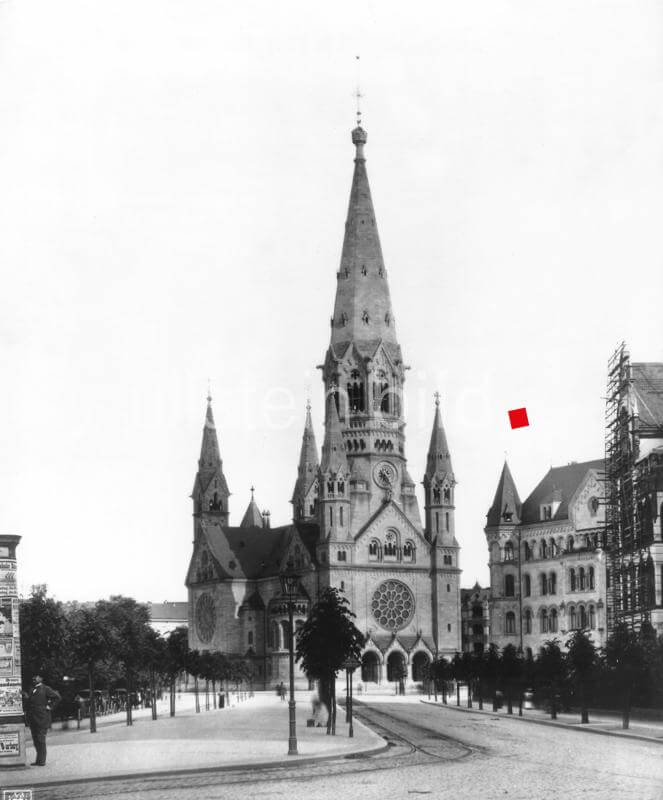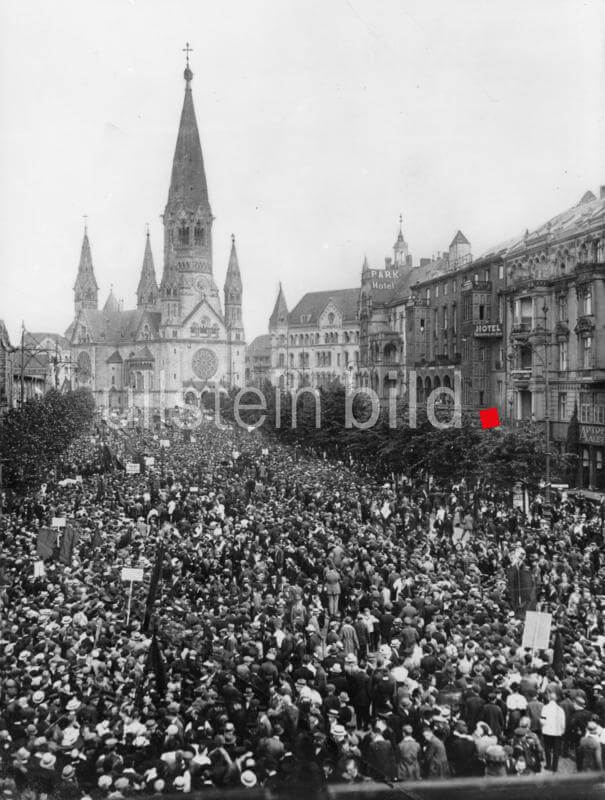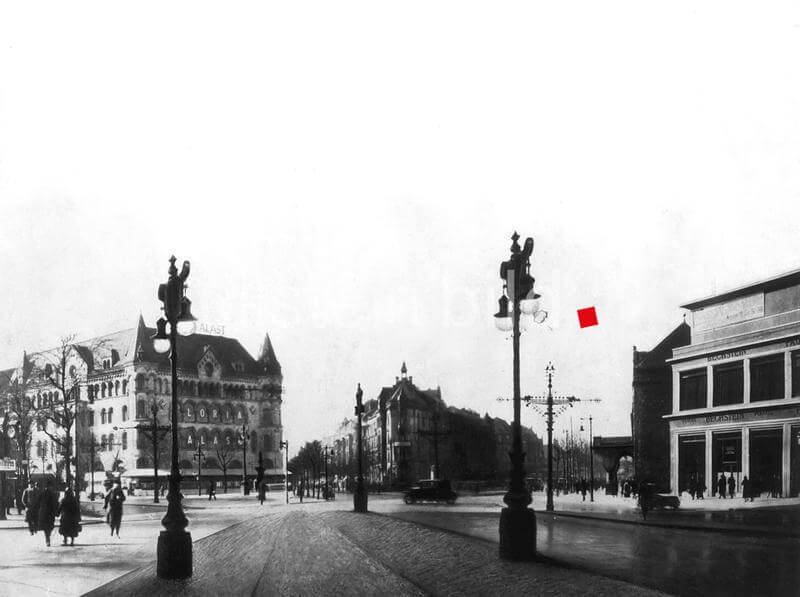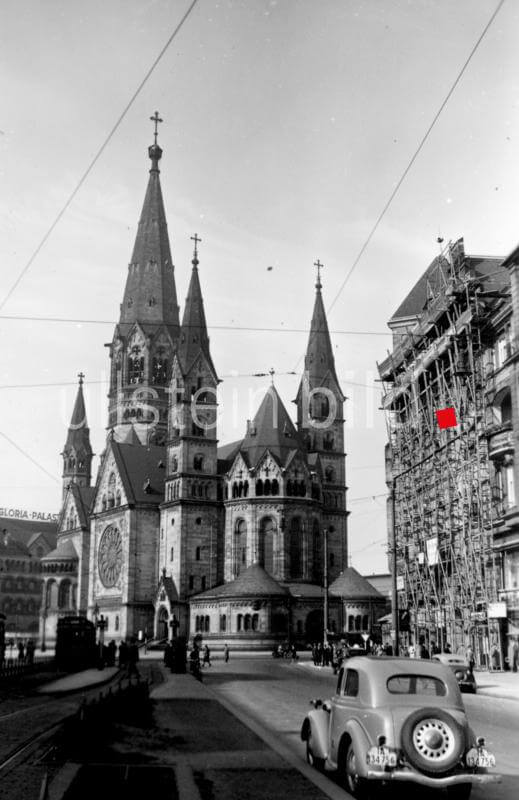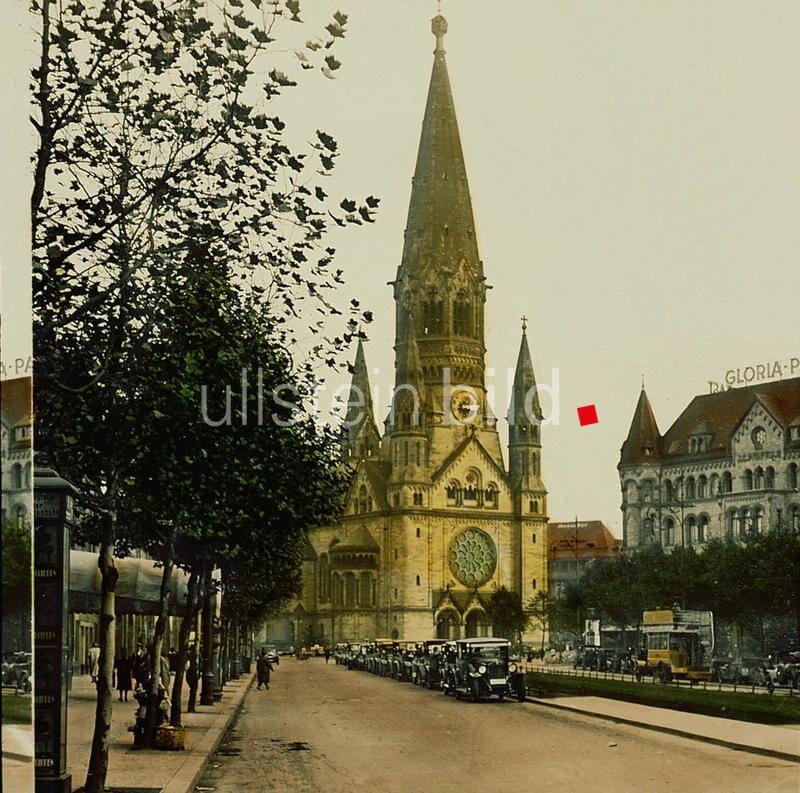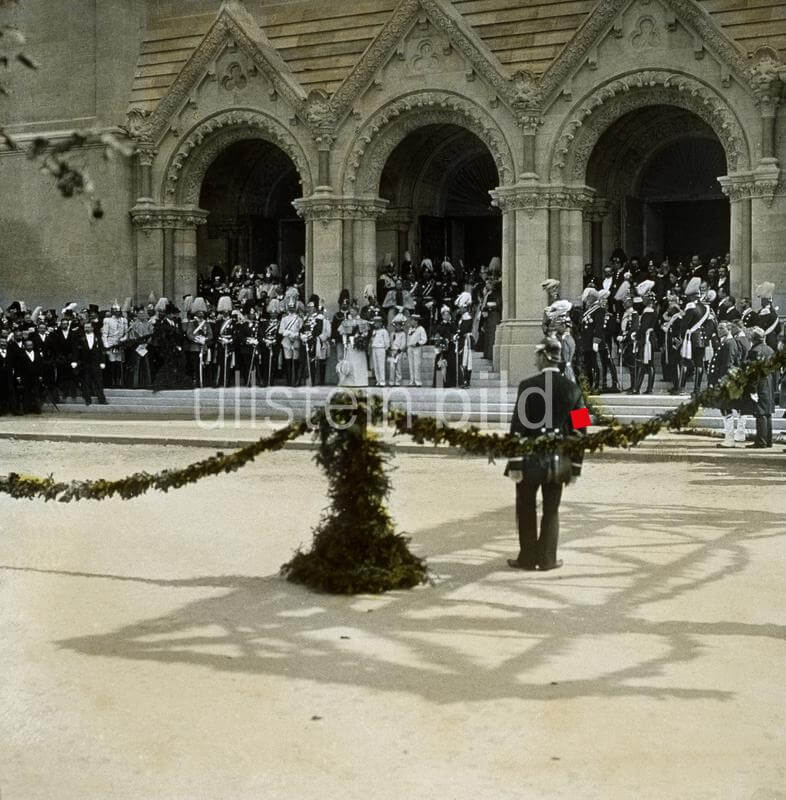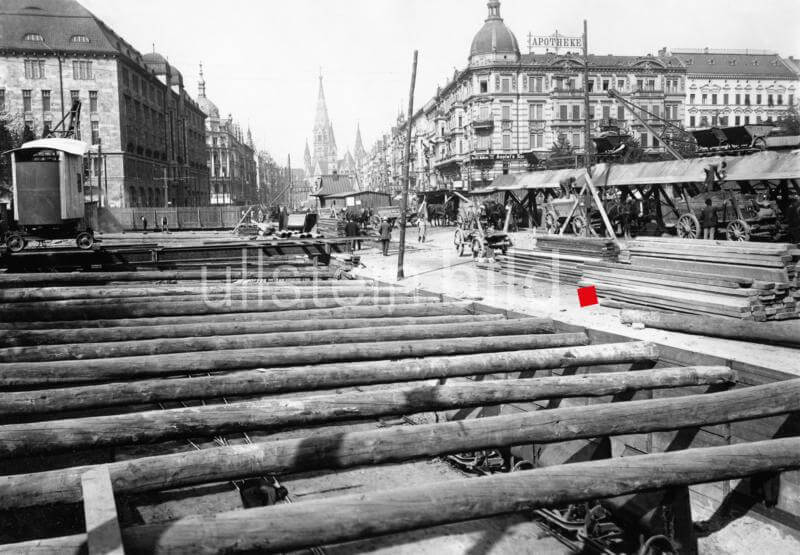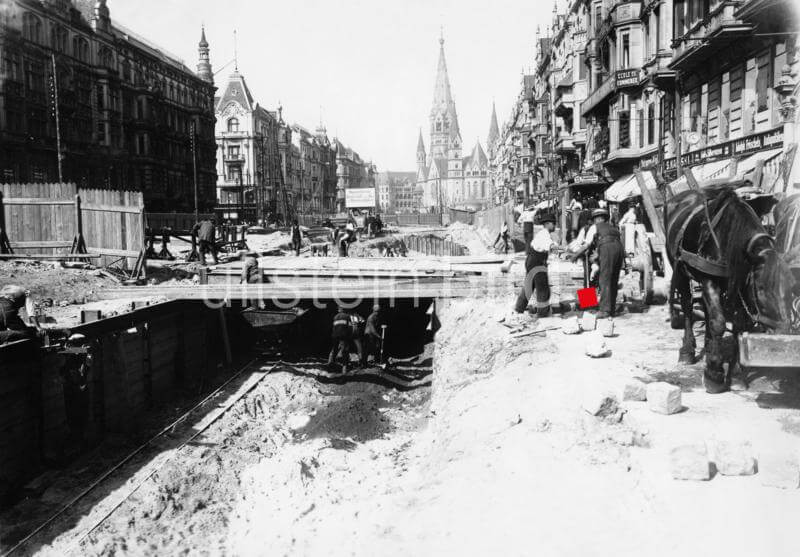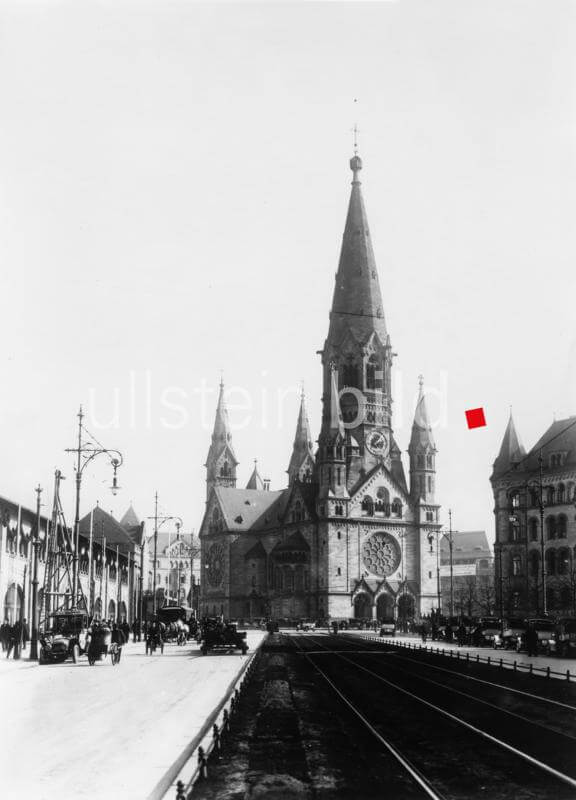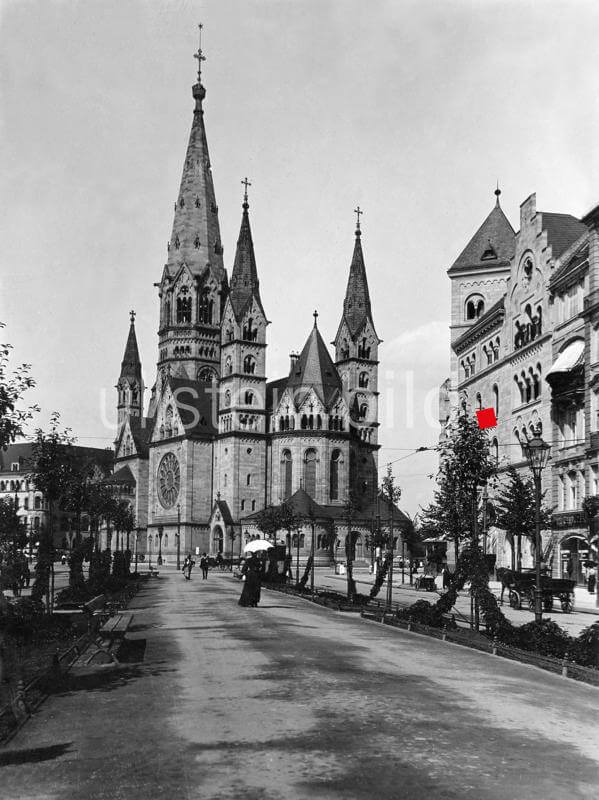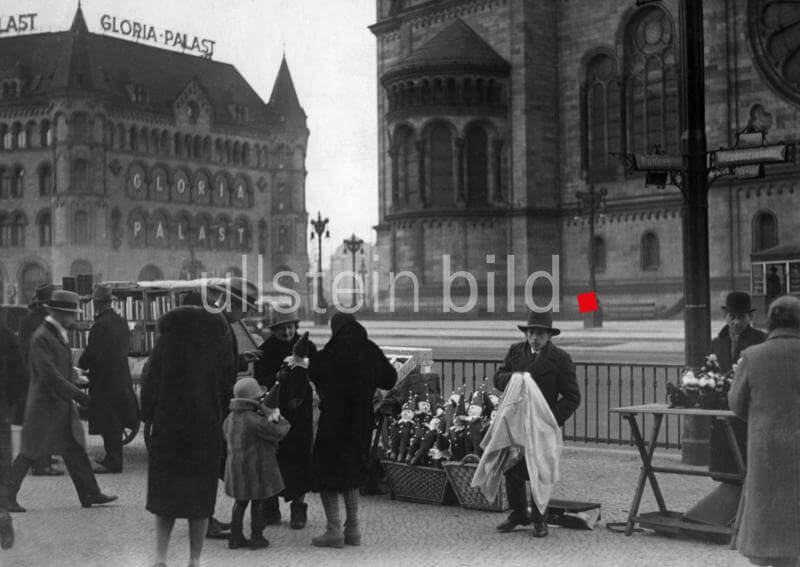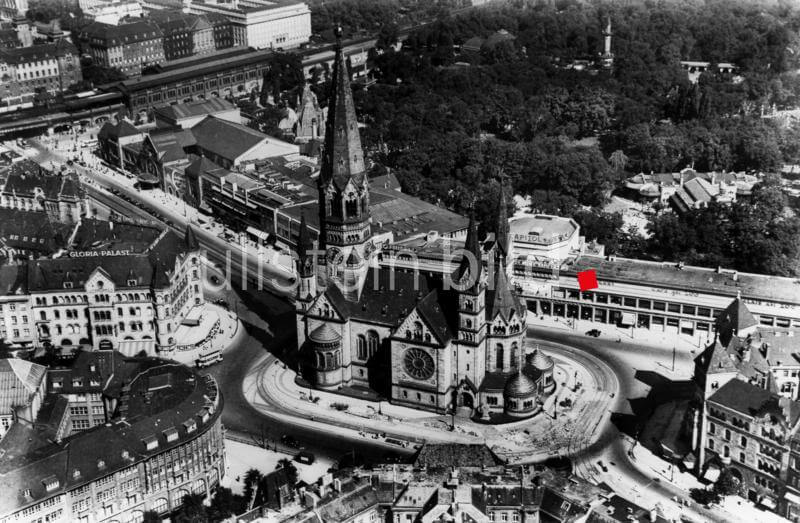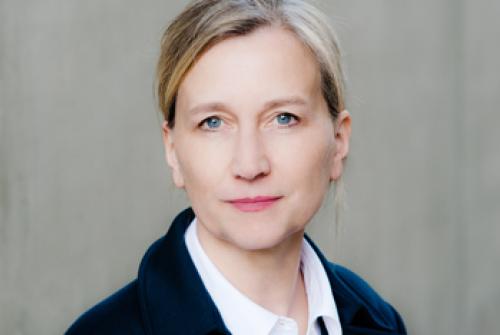125 Years Gedaechtniskirche Berlin
“What the Kaiserin-Augusta-Platz would look like without the Gedaechtniskirche”
The photographic collection Ullstein, which has grown out of the editorial work in the Berlin newspaper and magazine publisher Ullstein since the end of the 19th century, provides a comprehensive picture of human life and contemporary history in all areas of press photography. The image of the Kaiser Wilhelm Memorial Church, a central motif for Berlin, could not and should not be excluded from this. When construction was completed in 1895, the church and its history became the subject of pictures by renowned photographers such as Waldemar Titzenthaler (1869-1937) and Hugo Rudolphy (1855-1919). Only a few years later, in an issue of the high-circulation Berliner Illustrirte Zeitung of 1905, modernism breaks with ideas of the future, as will remain the guiding principle for the agreement between photographers and text authors at Ullstein. The overriding theme is the awakening of Berlin and the status of a metropolis: a crucial issue at the time, as it concerns the city's increasing economic power, population density, global competition and also its architectural history. “What Berliners still lack - something worth imitating from other world cities” is the title of the weekly Berliner Illustrirte Zeitung and in one of the captions it asks the question: “Why are there no bus shelters at the most important stops of the electric tram in Berlin to protect against the rigours of the weather, like this one we built in front of the Kaiser Wilhelm Memorial Church?” In the inconspicuous pronoun “we” there is not only the self-confidence of the publishers, but also the application of editorially overlapping possibilities. The photomontage allows the fictitious construction of an - as yet - non-existent architectural detail: a covered tram stop, in the centre of the city and in the immediate vicinity of the Kaiser Wilhelm Memorial Church. This is just one of several shortcomings of the growing metropolis Berlin, which is diagnosed here in comparison to Paris, London, Vienna or New York. Photographic means not only succeed in creating a visual surprise effect, but also in emphasizing the urgency of a question. And in this way, a modern visualization of progress and of the idea of the future takes its place in newspapers and magazines. In addition to the already self-evident communication of news and peculiarities through photography, alongside the effect of commentary and the exercise of criticism. The publishing house itself has created the prerequisites for this: early and close cooperation with selected photographers, technical conditions and also the placement of images and text in the layout of publications as diverse as Berliner Illustrirte Zeitung, Uhu, Gruene Post, Tempo, Der Querschnitt, Die Dame or Koralle.
In the following decade, the restless 1920s, which were also stressful and marked by strong contradictions, photography continued to gain in impact and shaped the appearance of the publications. Kurt Szafranski (1890-1964) as artistic director at Ullstein and managing director of the Berliner Illustrirte Zeitung encouraged this development. The publishing house maintains a photographic studio, employs picture authors, and places extensive and global orders for photo series. These include a number of key photographers who, on various occasions and in different years, have taken up and reworked the image motif of the Gedaechtniskirche. This is how the photographs of the church in the west of Berlin by Erich Salomon (1886-1944), Otto Umbehr (1902-1980), John Graudenz (1884-1942), Alex Stoecker (1896-1962) and Sasha Stone (1895-1940) were created. Their themes include not only architectural photography and events in the immediate vicinity of the building, but also the possibilities of new perspectives and statements. None other than Otto Umbehr (Umbo) enriched an editorial article from 1928 with his night photograph of the Gedaechtniskirche under the heading “Berlin's western center at night”: the Ullstein magazine Uhu dedicated the viewing of full-page published photographs to the subject. The pulsating big city, the nocturnal and different life are reflected in these pictures. At the same time, the publication celebrates the effect of Umbehr's photography: “The Kaiser Wilhelm Memorial Church catches the reflection of the illuminated advertisements like a single reflector.”
Awareness of the relevance of contemporary photographers has been written into the Ullstein newspaper and magazine publishing house's log book not only from the very beginning. It is also formulated at crucial points, for example in the 1929 Uhu, which names the representatives of the “new artists' guild”. Alongside Hoppé, Munkacsy, Abbé, Renger-Patzsch, Kertész, Salomon and Moholy-Nagy, the photographer Sasha Stone is also introduced. His repertoire includes outstanding Berlin photographs - among them the picture motif of the Gedaechtniskirche - published in 1929 by the architect Adolf Behne in the volume “Berlin in Pictures”. Stone's joy of experimentation, on the other hand, had already made an extraordinary editorial contribution to the Uhu three years earlier. The text by the editor and art critic Karl Scheffler on the topic “Berlin in 50 years - Perspectives of a cosmopolitan city” deals with what he sees as the necessary transformation and expansion of the city. He directs the reader's interest to two different photographs, clearly arranged on a double page. On the one hand: “The Kaiser Wilhelm Memorial Church, a striking but traffic-impeding monument of western Berlin”. On the other: “The traffic junction exposed by our photographer: the retouched church on Kaiserin-Augusta-Platz, the heart of the newly emerging western city of Berlin”. Once again, retouching serves as a means of choice to make clear, to provoke, to make a future solution conceivable and tangible: the centre of Berlin without the Gedaechtniskirche. In the collaboration between text and image author, the performance of the photographer is explicitly emphasized, who as a result completely redesigns the square. The vehement incision and the change here take on a much more concrete form than the text suggests or demands. For although Scheffler emphasizes the lasting significance of the city, he formulates his ideas of redesign in general terms: “Inevitably, some of the long-planned road breakthroughs are inevitable, others, more radical ones, will have to follow.” Scheffler also explains his reflections and controversial artistic considerations in several book publications, which have ensured him an attentive and broad public for a long time. One of his fundamental convictions can also be found in this text in the Uhu from 1926: “Berlin will become all the more important for Germany in every respect, the more unionism becomes politically and economically established and the more that which is called 'the United States of Europe' becomes a reality.” The magazine article in its composed compilation of texts and images offers at one point the successful interweaving of two authors: Karl Scheffler and Sasha Stone, who could hardly be closer to each other than in this attempt at modernism and in this edition of their works from the 1920s. With Ullstein in Berlin.
Dr. Katrin Bomhoff, ullstein bild collection, Axel Springer Ullstein Syndication GmbH
Please visit www.ullsteinbild.de for an extensive selection of pictures.
